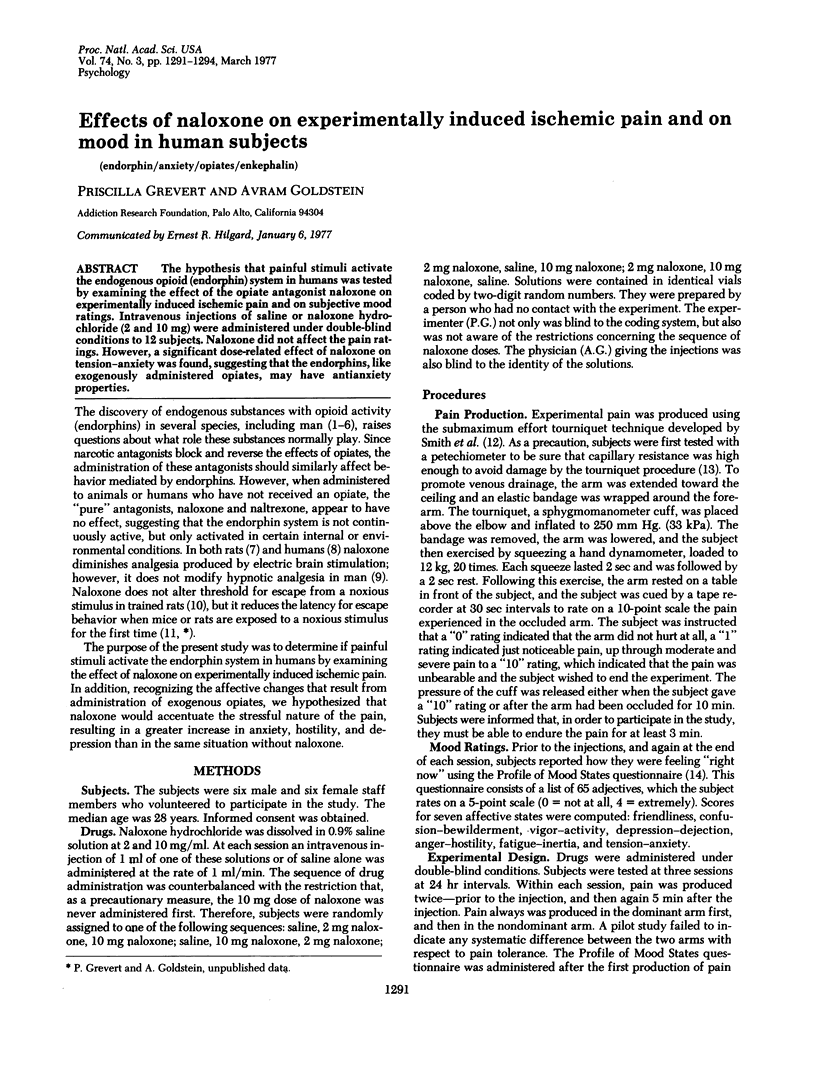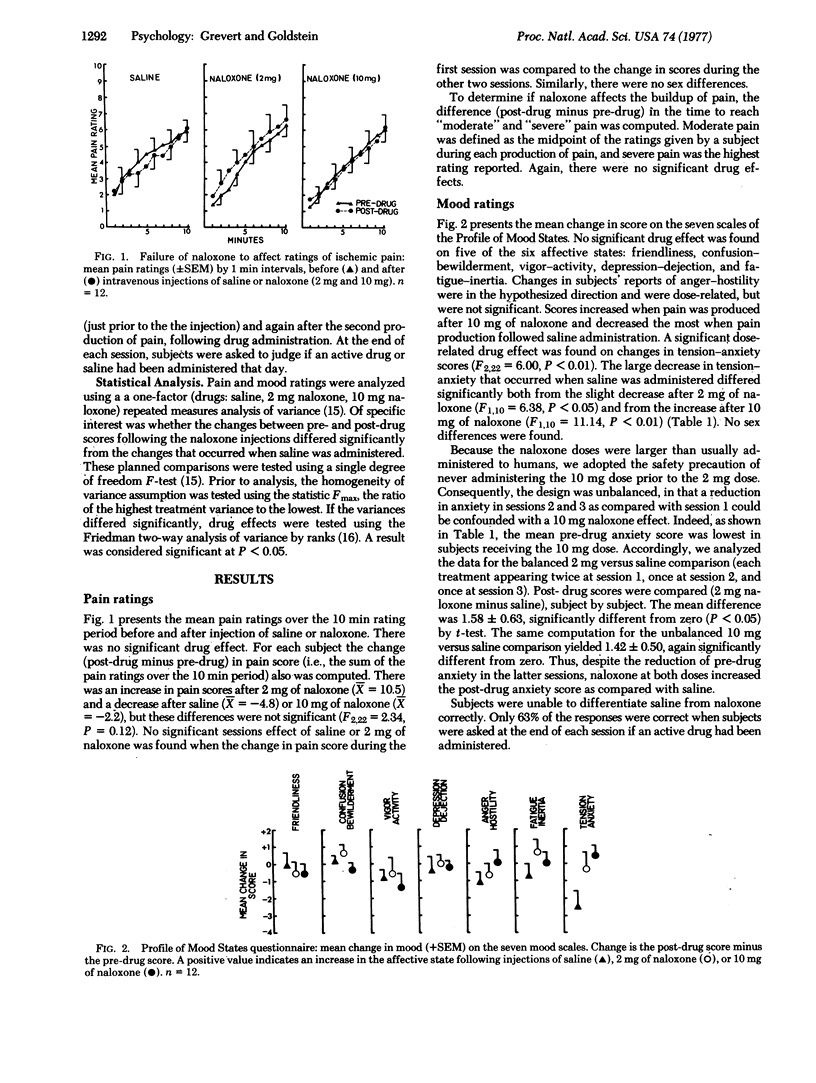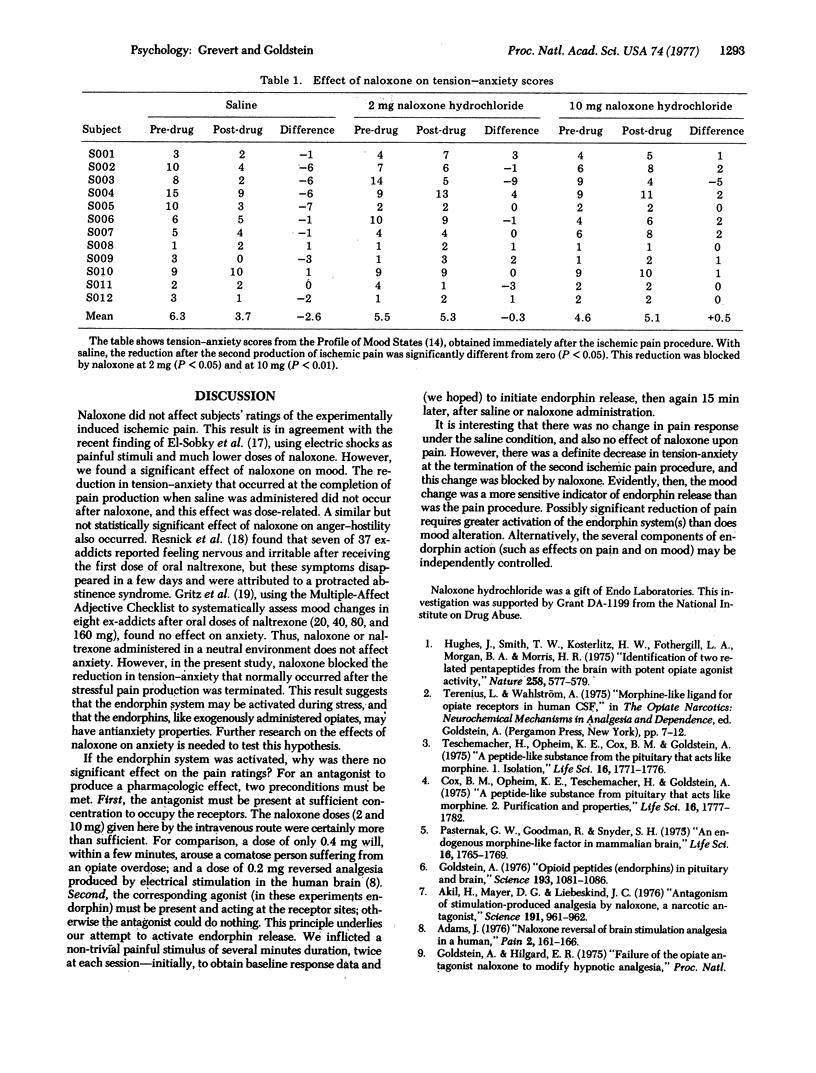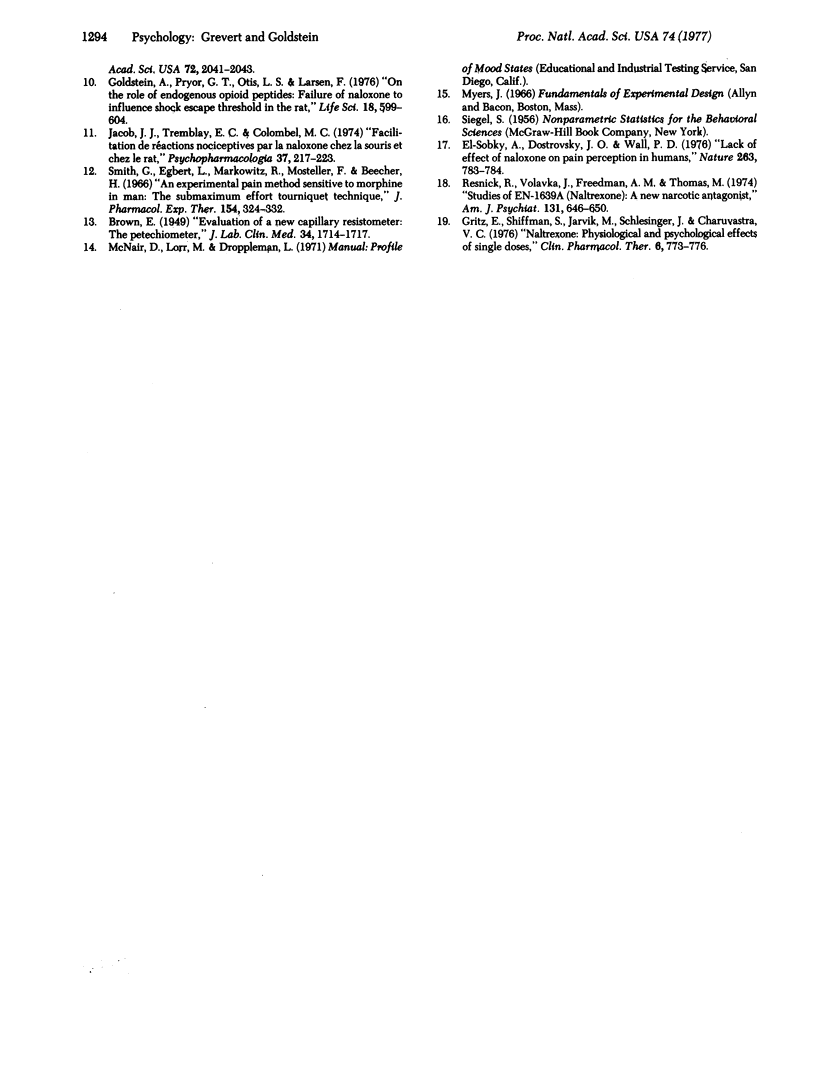Abstract
The hypothesis that painful stimuli activate the endogenous opioid (endorphin) system in humans was tested by examining the effect of the opiate antagonist naloxone on experimentally induced ischemic pain and on subjective mood ratings. Intravenous injections of saline or naloxone hydrochloride (2 and 10 mg) were administered under double-blind conditions to 12 subjects. Naloxone did not affect the pain ratings. However, a significant dose-related effect of naloxone on tension-anxiety was found, suggesting that the endorphins. like exogenously administered opiates, may have antianxiety properties.
Full text
PDF



Selected References
These references are in PubMed. This may not be the complete list of references from this article.
- Adams J. E. Naloxone reversal of analgesia produced by brain stimulation in the human. Pain. 1976 Jun;2(2):161–166. [PubMed] [Google Scholar]
- Akil H., Mayer D. J., Liebeskind J. C. Antagonism of stimulation-produced analgesia by naloxone, a narcotic antagonist. Science. 1976 Mar 5;191(4230):961–962. doi: 10.1126/science.1251210. [DOI] [PubMed] [Google Scholar]
- Cox B. M., Opheim K. E., Teschemacher H., Goldstein A. A peptide-like substance from pituitary that acts like morphine. 2. Purification and properties. Life Sci. 1975 Jun 15;16(12):1777–1782. doi: 10.1016/0024-3205(75)90272-6. [DOI] [PubMed] [Google Scholar]
- El-Sobky A., Dostrovsky J. O., Wall P. D. Lack of effect of naloxone on pain perception in humans. Nature. 1976 Oct 28;263(5580):783–784. doi: 10.1038/263783a0. [DOI] [PubMed] [Google Scholar]
- Goldstein A. Opioid peptides endorphins in pituitary and brain. Science. 1976 Sep 17;193(4258):1081–1086. doi: 10.1126/science.959823. [DOI] [PubMed] [Google Scholar]
- Goldstein A., Pryor G. T., Otis L. S., Larsen F. On the role of endogenous opioid peptides: failure of naloxone to influence shock escape threshold in the rat. Life Sci. 1976 Mar 15;18(6):599–604. doi: 10.1016/0024-3205(76)90339-8. [DOI] [PubMed] [Google Scholar]
- Gritz E. R., Shiffman S. M., Jarvik M. E., Schlesinger J., Charuvastra V. C. Naltrexone: physiological and psychological effects of single doses. Clin Pharmacol Ther. 1976 Jun;19(6):773–776. doi: 10.1002/cpt1976196773. [DOI] [PubMed] [Google Scholar]
- Hughes J., Smith T. W., Kosterlitz H. W., Fothergill L. A., Morgan B. A., Morris H. R. Identification of two related pentapeptides from the brain with potent opiate agonist activity. Nature. 1975 Dec 18;258(5536):577–580. doi: 10.1038/258577a0. [DOI] [PubMed] [Google Scholar]
- Jacob J. J., Tremblay E. C., Colombel M. C. Facilitation de réactions nociceptives par la naloxone chez la souris et chez le rat. Psychopharmacologia. 1974 Jul 11;37(3):217–223. doi: 10.1007/BF00421535. [DOI] [PubMed] [Google Scholar]
- Pasternak G. W., Goodman R., Snyder S. H. An endogenous morphine-like factor in mammalian brain. Life Sci. 1975 Jun 15;16(12):1765–1769. doi: 10.1016/0024-3205(75)90270-2. [DOI] [PubMed] [Google Scholar]
- Resnick R. B., Volavka J., Freedman A. M., Thomas M. Studies of EN-1639A (naltrexone): a new narcotic antagonist. Am J Psychiatry. 1974 Jun;131(6):646–650. doi: 10.1176/ajp.131.6.646. [DOI] [PubMed] [Google Scholar]
- Smith G. M., Egbert L. D., Markowitz R. A., Mosteller F., Beecher H. K. An experimental pain method sensitive to morphine in man: the submaximum effort tourniquet technique. J Pharmacol Exp Ther. 1966 Nov;154(2):324–332. [PubMed] [Google Scholar]
- Teschemacher H., Opheim K. E., Cox B. M., Goldstein A. A peptide-like substance from pituitary that acts like morphine. I. Isolation. Life Sci. 1975 Jun 15;16(12):1771–1775. doi: 10.1016/0024-3205(75)90271-4. [DOI] [PubMed] [Google Scholar]


